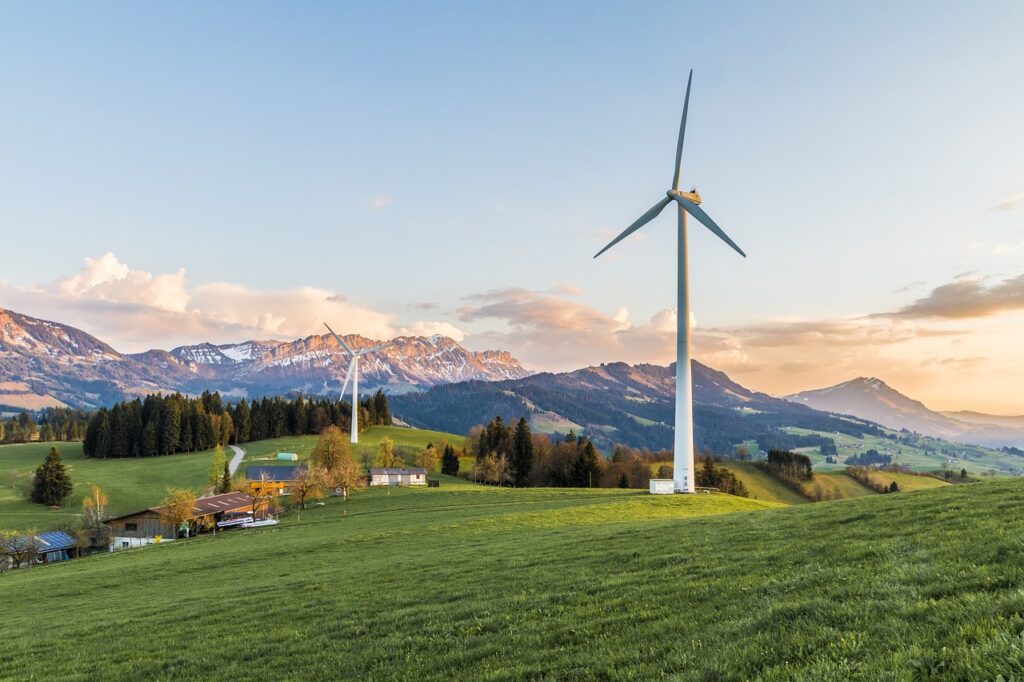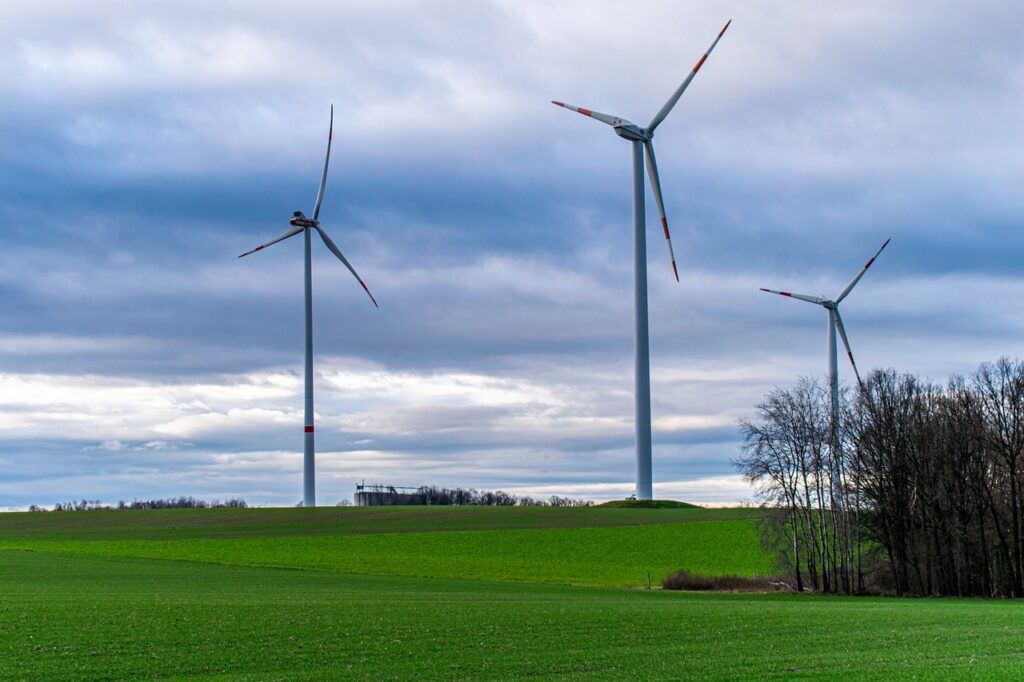- The energy transition is a global shift towards more sustainable and cleaner energy sources.
- The guy wire is also known as guy rope, guy strand, or stay wire made from galvanized steel, or stainless steel which helps them to resist the harsh weather conditions.
- AI can enhance the efficiency and reliability of energy systems.
The energy transition is a global shift towards more sustainable and cleaner energy sources, driven by the need to reduce greenhouse gas emissions and mitigate climate change. As the world moves towards renewable energy sources, it is essential to find innovative solutions to the challenges that arise with this transition. Artificial intelligence (AI) is one such solution that can enhance operations in the energy transition and accelerate the shift towards a more sustainable future. This article will discuss how AI can improve the efficiency, reliability, and safety of energy systems, facilitate the integration of renewable energy sources, and reduce the environmental impact of energy production and consumption.
TTF power manufactures and supplies hot-dip galvanized guy wire for overhead power transmission and distribution systems. A guy wire is a tensioned cable that was originally called “gei” from the Dutch who used it to fix ships masts. It is now called guy wire, stay wire, guy strand, guy cable, guy anchors and sometimes guide wires. It is a tensioned cable, wire or rope that is used to steady, guide or secure all structures like ship masts, electric poles, radio towers or wind turbines. All these structures are of some considerable heights that are not self-supporting. The guy wires work by distributing some of the structures weight to the ground.
What is Energy Transition?

Energy transition refers to the ongoing global shift from using fossil fuels such as coal, oil, and natural gas for energy production, to using renewable energy sources such as wind, solar, hydro, geothermal, and biomass. This transition is driven by concerns over climate change, environmental sustainability, and energy security.
The goal of energy transition is to reduce greenhouse gas emissions and other harmful pollutants that are released during the extraction, production, and use of fossil fuels. Renewable energy sources offer several advantages over fossil fuels, including lower greenhouse gas emissions, greater energy independence, and reduced reliance on finite resources.
The energy transition involves a fundamental change in the way we generate, distribute, and consume energy. It requires significant investment in renewable energy infrastructure, the development of new technologies, and the implementation of policies and regulations to support the transition. The transition to renewable energy is a complex process that requires collaboration between governments, businesses, and individuals to ensure a sustainable and affordable energy future.
The definition of Artificial Intelligence(AI)
AI stands for Artificial Intelligence, which refers to the development of computer systems that can perform tasks that would typically require human intelligence to complete. AI involves the creation of algorithms and models that enable computers to learn from data, recognize patterns, make decisions, and take actions based on that learning.
AI technologies are typically categorized into two broad categories: narrow or weak AI, which is designed to perform specific tasks such as speech recognition, image analysis, or playing games; and general or strong AI, which is intended to replicate human-level intelligence and can perform a wide range of tasks.
Enhancing Efficiency and Reliability of Energy Systems
Energy systems are complex, with many interconnected components, and optimizing their performance is a challenging task. AI can be used to analyze data from sensors, smart meters, and other sources to identify patterns and predict future energy demand. This data can then be used to optimize energy production and distribution, reduce waste, and lower costs. The following are some examples of how AI can enhance the efficiency and reliability of energy systems:
- Optimizing Wind Turbine Performance – AI can be used to optimize the performance of wind turbines by predicting wind patterns and adjusting the angle of the blades to maximize energy production.
- Optimizing Solar Panel Performance – AI can be used to optimize the performance of solar panels by predicting the amount of sunlight and adjusting the panel angle to maximize energy production.
- Optimizing Energy Storage Systems – AI can be used to optimize the performance of energy storage systems, such as batteries, by predicting energy demand and storing energy during off-peak hours when energy is cheaper.
- Proactive Maintenance – AI can improve the safety and reliability of energy systems by detecting and predicting equipment failures before they occur. By analyzing data from sensors and other sources, AI algorithms can identify patterns that indicate potential equipment failures, allowing maintenance teams to take proactive measures to prevent downtime and ensure the safety of workers.
Facilitating the Integration of Renewable Energy Sources
Renewable energy sources, such as wind and solar power, are variable, meaning that their output fluctuates based on weather conditions. This variability can create challenges for grid operators who must balance energy supply and demand in real-time. AI can be used to predict the output of renewable energy sources and provide real-time feedback to grid operators, enabling them to make more informed decisions about energy distribution and management. The following are some examples of how AI can facilitate the integration of renewable energy sources:
- Predictive Analytics – AI can predict the output of renewable energy sources and provide real-time feedback to grid operators, enabling them to make more informed decisions about energy distribution and management.
- Intelligent Energy Management Systems – AI can be used to develop intelligent energy management systems that can predict energy demand, balance energy supply and demand, and manage energy storage systems to ensure a stable and reliable energy supply.
Reducing Environmental Impact of Energy Production and Consumption
Finally, AI can help to reduce the environmental impact of energy production and consumption. By analyzing data on energy consumption patterns, AI algorithms can identify opportunities for energy efficiency improvements and recommend measures to reduce energy waste. The following are some examples of how AI can reduce the environmental impact of energy production and consumption:
- Energy Efficiency – AI can analyze data from smart meters to identify energy-intensive appliances and recommend more energy-efficient alternatives.
- Emissions Reduction – AI can be used to monitor emissions from energy production and recommend measures to reduce greenhouse gas emissions.
Conclusion
In conclusion, AI has the potential to significantly enhance operations in the energy transition and accelerate the shift towards a more sustainable future. By improving the efficiency, reliability, and safety of energy systems, facilitating the integration of renewable energy sources, and reducing the environmental impact of energy production and consumption, AI can help to create a more sustainable and resilient energy system for future generations.

FAQs
What is Energy transition?
Energy transition refers to the ongoing global shift from using fossil fuels such as coal, oil, and natural gas for energy production, to using renewable energy sources such as wind, solar, hydro, geothermal, and biomass. This transition is driven by concerns over climate change, environmental sustainability, and energy security.
What is guy wire?
A guy wire is a tensioned cable that was originally called “gei” from the Dutch who used it to fix ships masts.
How AI boost the transition of energy systems?
Optimizing Wind Turbine Performance;Optimizing Solar Panel Performance;Optimizing Energy Storage Systems;Proactive Maintenance.


